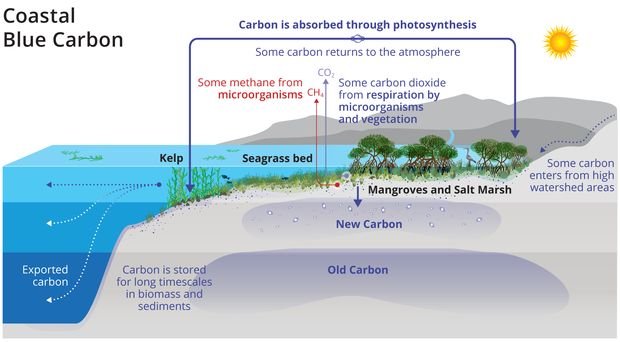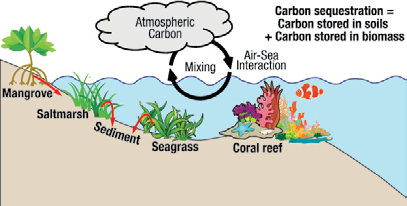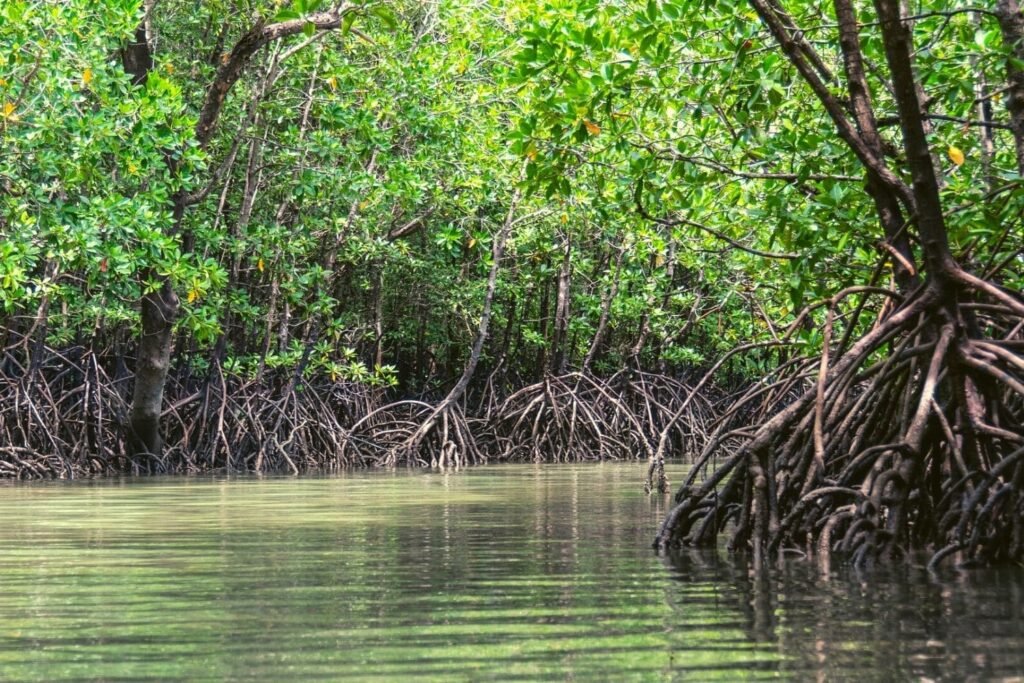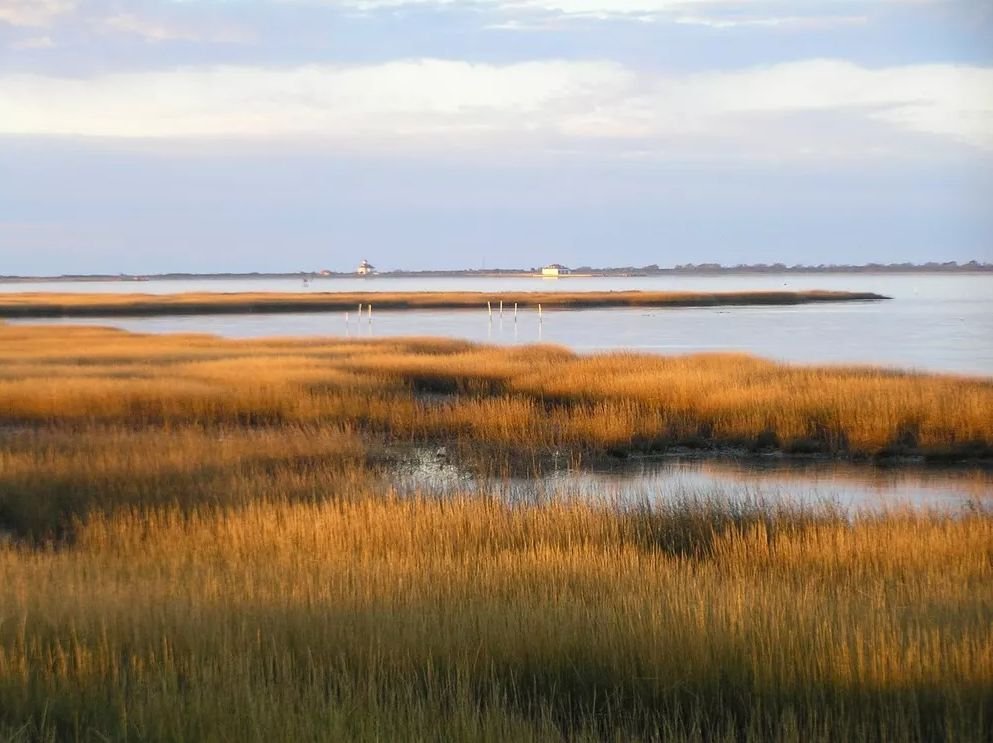Carbon dioxide taken from the atmosphere and stored in the water is referred to as blue carbon. The term “blue” alludes to the storage’s aqueous quality. The great majority of blue carbon is carbon dioxide that has been dissolved in the water.

Experts typically refer to salt marshes, mangroves, and seagrass meadows when discussing the carbon storage capacity of coastal blue carbon ecosystems.
Seagrass beds are made up of blooming plants that flourish in saline sea conditions. Mangroves are trees, bushes, or palms that grow in coastal marshes that are prone to inundation from salt water during high tide. Salt marshes are densely packed communities of salt-tolerant grasses, herbs, and/or shrubs that thrive between land and open salt water.

Carbon dioxide is absorbed by all vegetation and used to develop roots, leaves, and other components. Animals consume plants, dispersing the carbon absorbed throughout the environment.
Photosynthesis is used by plants and trees in coastal habitats to absorb carbon dioxide. Some of that carbon is re-emitted into the atmosphere as methane and carbon dioxide, but some is buried in soil and some is taken further away and deposited in ocean sediments.
These undersea soils and sediments, cut off from the atmosphere, constitute a good long-term carbon sink. If left alone, the soils can retain atmospheric carbon for centuries, if not millennia.

Coastal blue carbon ecosystem soils and plants store between 10 and 24 billion metric tonnes of carbon. They add 30 to 70 million metric tonnes to their soils each year. On the one hand, that appears to be a lot.
However, it is just a fraction of the carbon absorbed directly into the ocean as CO2 (40 trillion metric tonnes), the carbon trapped in the world’s permafrost (1.7 trillion metric tonnes), or the amount in forests and other plants globally (450-650 billion metric tons).

Other benefits of coastal ecosystems that are important for carbon capture have long been recognized by ecologists. Fish, reptiles, mammals, birds, and a variety of invertebrates live in coastal environments.
These ecosystems also help to sustain shorelines by retaining sediments on the sea bottom, helping to keep coastal waters pure, and absorbing wave action and storm surges.

Coastal blue carbon ecosystems preserve inland human cities and infrastructure by limiting coastal erosion. Furthermore, coastal habitats limit precipitation absorption and filter runoff, conserving water quality.
Coastal habitats are under significant development pressure, despite all of the advantages and possibilities they give. We are continuing to lose mangroves at a pace of up to 3% per year, salt marshes at 1-2% per year, and sea grasses at 7% per year. Shame on us…
Reference- NOAA website, Clean Technica Story






